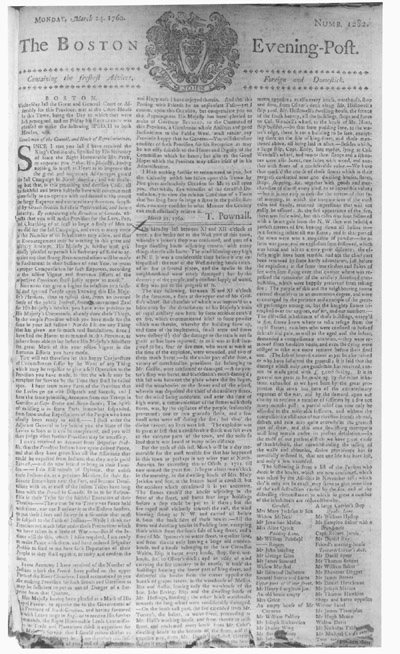
|
Boston
Evening-Post, 24 March 1760, "Boston Fire," Courtesy, American Antiquarian Society |
Boston Fire In the colonial period, when urban areas were filled with wooden structures, often built close together, fire posed a regular and serious hazard. The spring of 1760 proved to be a devastating one for the people of Boston. A series of small fires broke out on March 17th and 18th. They were followed by the blaze described in this account, which lasted for three days and destroyed a huge amount of property, including 349 buildings, and left more than a thousand people homeless. Remarkably, no one died in the fire. Numerous other women shopkeepers suffered significant losses, including Sarah McNeal, Ann Dearden, and Alice Quick, who lost over one thousand pounds worth of real and personal estate. Adapted with permission from Patricia Cleary, Elizabeth Murray: A Woman's Pursuit of Independence in Eighteenth-Century America, (Amherst: University of Massachusetts Press, 2000), 82, 244-245. For more on the fire, see G. B. Warden, Boston, 1689-1776 (Boston: Little, Brown, 1970), 150; William Pencak, "The Social Structure of Revolutionary Boston: Evidence from the Great Fire of 1760," Journal of Interdisciplinary History |
||
For other examples of news accounts visit the Browse the Collection portion of our site. |
|||



